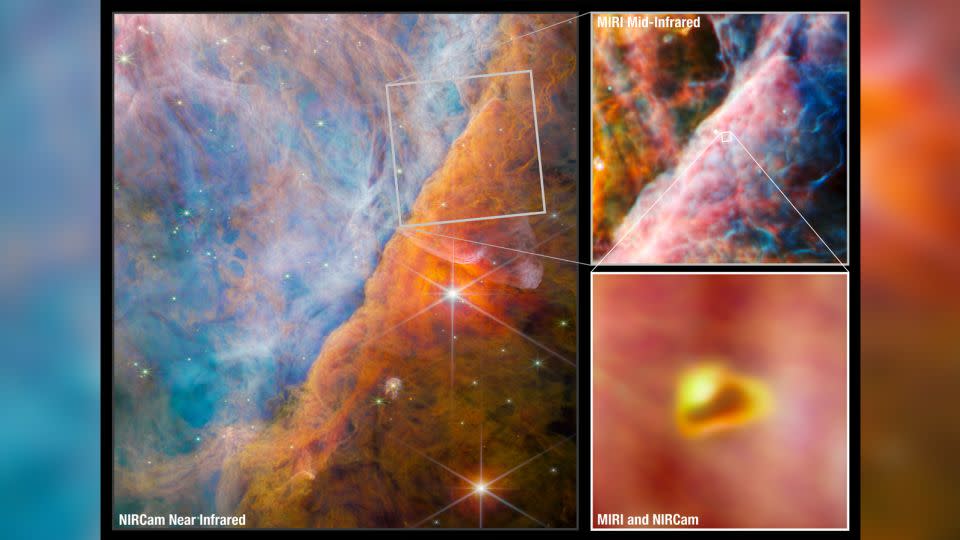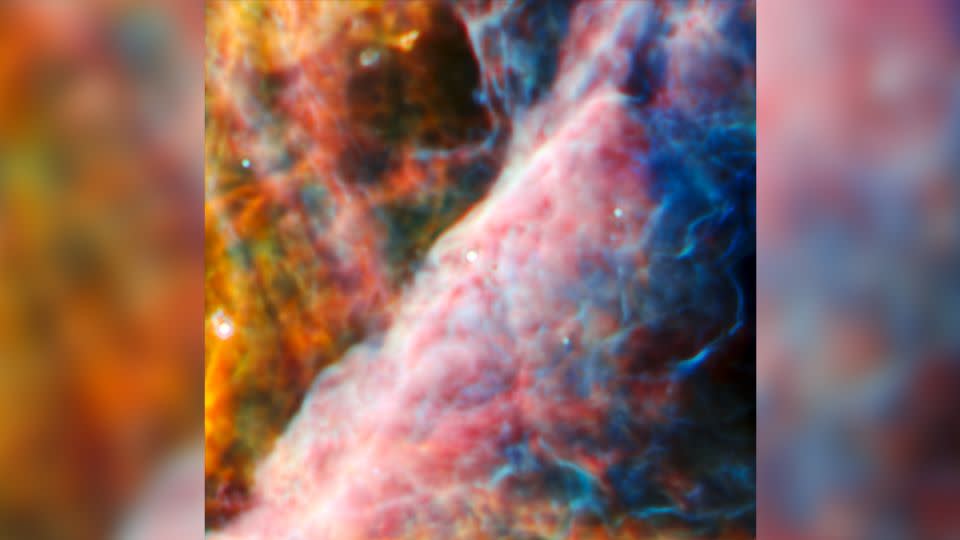Webb telescope detects crucial molecule in space for the first time
Editor’s Note: Sign up for CNN’s Wonder Theory science newsletter. Explore the universe with news on fascinating discoveries, scientific advancements and more.
Astronomers have detected a crucial carbon molecule in space for the first time using the James Webb Space Telescope.
The compound, called methyl cation, or CH3+, was traced back to a young star system located 1,350 light-years away from Earth in the Orion Nebula, according to NASA.
Carbon compounds are intriguing to scientists because they act as the foundation for all life as we know and understand it. Methyl cation is considered a key component that helps form more complex carbon-based molecules.

Understanding how life began and evolved on Earth could help researchers determine if it’s possible elsewhere in the universe. The highly sensitive capabilities of the Webb telescope, which views the cosmos through infrared light that is invisible to the human eye, is revealing more about organic chemistry in space.
The space observatory detected methyl cation in a protoplanetary disk, called d203-506, swirling around a young red dwarf star. These disks, largely made of gas and dust, are the leftover remnants of star formation. Planets are born in these large stellar halos, giving rise to planetary systems.
A study detailing the discovery was published Monday in the journal Nature.
The role of ultraviolet radiation
Red dwarf stars are much smaller and cooler than our sun, but the d203-506 system is still lashed with strong ultraviolet light from neighboring young, massive stars.
In most scenarios, UV radiation is expected to wipe out organic molecules, but the team actually predicted that the radiation could provide a necessary energy source that allows methyl cation to form.
After CH3+ forms, it leads to additional chemical reactions that allow more complex carbon molecules to build, even at low temperatures in space.

While methyl cation doesn’t react efficiently with hydrogen, the most abundant molecule in the universe, it reacts well with a wide range of other molecules. Because of this chemical property, astronomers have long considered CH3+ an important building block of interstellar organic chemistry. But methyl cation wasn’t detected in space until now.
“This detection not only validates the incredible sensitivity of Webb but also confirms the postulated central importance of CH3+ in interstellar chemistry,” said study coauthor Marie-Aline Martin-Drumel, a researcher at the University of Paris-Saclay’s Institute of Molecular Sciences of Orsay in France, in a statement.
The researchers detected different molecules in the protoplanetary disk of d203-506 than those found in typical disks, and they didn’t detect any water, according to the study.
“This clearly shows that ultraviolet radiation can completely change the chemistry of a protoplanetary disk. It might actually play a critical role in the early chemical stages of the origins of life,” said lead study author Olivier Berné, research scientist in astrophysics at the French National Centre for Scientific Research in Toulouse, in a statement.
For more CNN news and newsletters create an account at CNN.com

